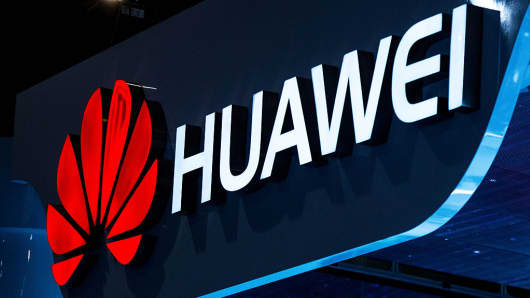Ambitious Huawei targets richer customers in drive to be world’s top smartphone maker
July 28, 20171.5K views0 comments
Chinese tech firm Huawei has clawed its way to the top in China and now it wants to clobber Apple and Samsung globally by selling to richer customers.
“We’re more focused on developed countries, instead of developing countries,” Richard Yu, CEO of Huawei’s consumer business group, told CNBC. That’s because they’re more likely to have a better economy and stronger consumer spending power, he said.
“Everybody knows that profit is on high tier, low tier no profit, and the middle tier very few margin … to be honest, we have no interest in the low end,” Yu said, adding that “Huawei is a company good at technology, innovation … we believe we can bring more value to the high-end users” who care about better design and user experience.
Huawei has made it big at home, and it has expanded ambitiously in a quest to become a global brand. It’s now the world’s third-largest smartphone maker, accounting for nearly one-tenth of the market. But profits are getting harder to come by, and the company still lags behind Samsung and Apple with 22 percent and 15 percent of the market last year, according to industry research firm Canalys.
Read Also:
- Lagos targets N3trn in PPPs to tackle coastal erosion
- Dyna.Ai, PalmPay partner to drive AI innovation in Nigeria’s fintech sector
- Africa eyes $180bn digital trade windfall to fuel industrial drive
- The world is changing: How’s your organisation adapting?
- Lagos ranked world's fastest-growing tech ecosystem
Experts say the company is doing poorly in key markets like Indonesia and India — and the U.S. remains elusive.
“The U.S. is a must-have,” said Mo Jia, an analyst at research firm Canalys. “Only by [obtaining] a sound presence in the U.S., Huawei could have the chance to claim its crown in the global smartphone market.”
On Thursday, Huawei’s consumer business group said sales for the first half of the year increased 36.2 percent to 105.4 billion yuan ($15.6 billion), with smartphone shipments up by 20.6 percent to 73 million units. The company expects to keep pace for the second half, shipping 140 to 150 million phones by the end of this year, but that’s only a tad higher than the 139 million phones it sold last year.
So there’s still a ways to go, especially if Yu’s division is to hit its own target of $100 billion in revenue by 2020. To get there, Huawei will keep prioritizing higher end customers in markets like Europe and Japan, where it’s done well — phone shipments in Europe were up 18 percent in the first half of the year, led by Italy.
“Rome was not built in a day; everything you have to do it step by step,” Yu said. “And the U.S. will be our next step … they need a better product, also better innovation from better vendors, from Huawei.”
Yu declined to discuss specific growth plans in the U.S., but said the fast-changing tech industry meant companies couldn’t go it alone. “You cannot do everything by yourself; you have to do many things with partners.”
The company already partners with a range of companies including Leica, which industry analysts have touted as a success, allowing Huawei to launch dual-camera technology. It’s also going keep building tens of thousands of stores, some operated with partners, hitting 56,000 shops by year-end.
Looking ahead, Yu said Huawei would launch the world’s first artificial intelligence-powered processor in a smartphone before the end of 2017 — with a planned launch around the same time as Apple’s iPhone 8.
Yu wouldn’t give further details, but Huawei is expected to put out its Mate 10 phone, a product that he said would beat the competition by a mile with a longer battery life, faster charging speed, and great camera capabilities. “Huawei has even more powerful products,” he added.
Looking ahead, the company is developing even smarter — intelligent — phones that will know users well enough to offer tailored services.
“Our strategy: bring smart life to the consumers, when you’re walking, living, traveling, when you exercise,” Yu said. “No matter in which scenario, Huawei can always help you with that — a seamless smart life.”
Yu is unfussed about competition from domestic Chinese competitors Oppo and Vivo that offer much lower-cost phones, and have splashed big in advertising. Spending on marketing is not the way to outrun others — it’s developing far superior technology, Yu said.
“You should have leading technology, better innovation, better experience … sustainable growth is from continued investment,” he said. “We want to survive.”
